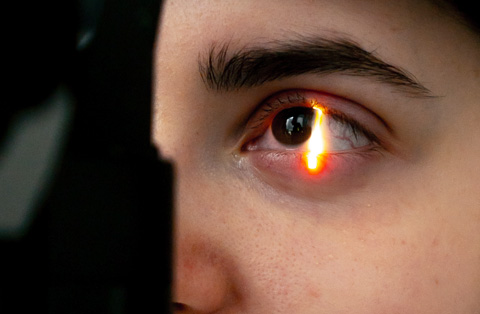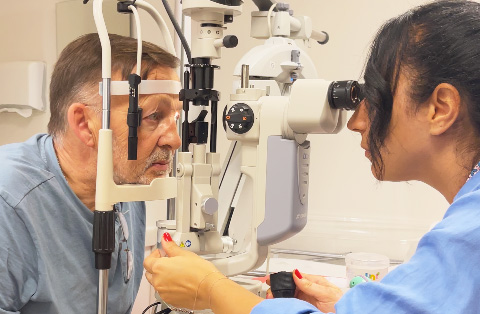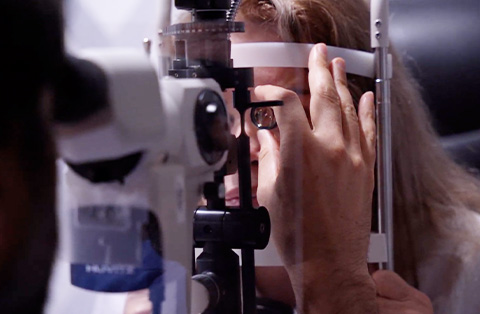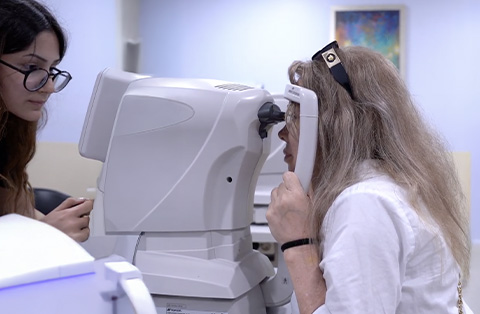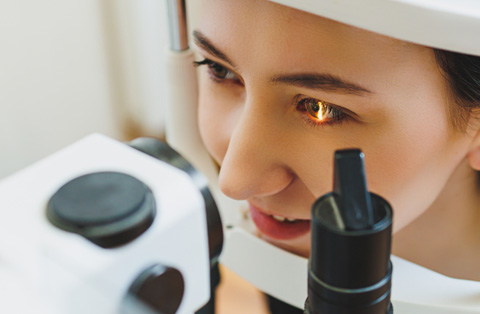Retinal transplants offer hope for restoring vision in conditions like macular degeneration and retinitis pigmentosa. Advanced therapies replace damaged retinal cells, potentially reversing severe vision loss.
What is Retinal Transplantation?
Retinal transplantation, or retina cell transplantation, is an advanced medical procedure designed to restore vision by replacing damaged retinal tissue or cells. The retina is a thin layer of light-sensitive tissue at the back of the eye. It is essential for processing light and sending visual signals to the brain.
This procedure involves transplanting healthy retinal cells, often derived from donor tissue or stem cells, into areas of the retina that have been damaged by disease or injury. It is a promising approach for treating severe vision loss caused by conditions such as macular degeneration, retinitis pigmentosa, or retinal injuries.
Retinal transplantation aims to improve or restore the function of the retina, potentially offering new hope to individuals with previously untreatable forms of blindness.
Types of Retinal Cell Transplants
Retinal cell transplantation techniques vary based on the type of cells used and the underlying condition being treated. Common types include:
● Stem Cell-Derived Retinal TransplantsStem cells, particularly embryonic or induced pluripotent stem cells (iPSCs), are developed into retinal pigment epithelial (RPE) cells or photoreceptor cells. These are transplanted to replace damaged cells in conditions like macular degeneration.
● Retinal Pigment Epithelium (RPE) TransplantsRPE cells play a critical role in supporting photoreceptors. Damage to these cells can lead to severe vision loss. RPE transplants involve replacing damaged or lost RPE cells, often using cells grown in a lab.
● Full-Thickness Retinal TransplantsIn cases of extensive retinal damage, full-thickness transplants involve transferring a complete layer of donor retinal tissue. This technique is more complex and less common.
● Retina-to-Retina TransplantsTissue from a healthy donor retina is transplanted to the affected retina. This approach is often experimental and may be used for severe injuries or diseases.
Each type of transplant is tailored to the specific needs of the patient and the underlying cause of vision loss.
How Do Stem Cell Transplants Work in the Retina?
Stem cell transplants in the retina aim to restore vision by replacing damaged or dysfunctional retinal cells. Stem cells have the unique ability to develop into specialized cell types, making them a promising option for treating retinal diseases. The process involves several steps:
● Source of Stem CellsStem cells used for retinal transplants are typically embryonic stem cells or induced pluripotent stem cells (iPSCs). iPSCs are derived from adult cells, reprogrammed to behave like embryonic stem cells.
● DifferentiationIn a laboratory, stem cells are directed to develop into specific retinal cell types, such as retinal pigment epithelial (RPE) cells or photoreceptors.
● Preparation and TransplantationOnce the desired cell type is produced, these cells are carefully implanted into the damaged area of the retina. This is often done through a minimally invasive surgical procedure.
● Integration and FunctionAfter transplantation, the new cells integrate into the existing retinal tissue. They replace damaged cells and work to restore the retina's function. For example, RPE cells support photoreceptors, and photoreceptor cells detect light and enable vision.
Stem cell transplants are still under research but show significant potential in treating degenerative retinal conditions, including macular degeneration and retinitis pigmentosa.
Exploring Pluripotent Stem Cells in Retinal Therapy
Pluripotent stem cells, such as embryonic stem cells (ESCs) and induced pluripotent stem cells (iPSCs), have become a cornerstone in the development of retinal therapies. Their ability to differentiate into any cell type, including retinal cells, makes them highly valuable for treating degenerative eye diseases.
● Embryonic Stem Cells (ESCs)ESCs are derived from early-stage embryos and can develop into retinal pigment epithelial (RPE) cells or photoreceptors. These cells are used to replace damaged retinal tissue in conditions like age-related macular degeneration (AMD).
● Induced Pluripotent Stem Cells (iPSCs)iPSCs are adult cells reprogrammed into a pluripotent state. They offer an ethical advantage over ESCs and can be patient-specific, reducing the risk of immune rejection. iPSCs are widely studied for creating both RPE cells and photoreceptors.
● Advantages in Retinal Therapy
○ Personalized Medicine: iPSCs allow the development of tailored therapies using the patient's own cells.
○ Disease Modeling: Scientists use iPSCs to study retinal diseases in the lab, leading to better understanding and treatments.
○ Potential for Widespread Use: Both ESCs and iPSCs hold promise for treating various retinal diseases, including retinitis pigmentosa and diabetic retinopathy.
Pluripotent stem cells represent a cutting-edge approach in regenerative medicine, offering hope for restoring vision in patients with progressive retinal conditions.
The Process of Retinal Cell Integration
Retinal cell integration is a crucial step in the success of retinal transplantation. It involves the newly transplanted cells adapting to their new environment and functioning as part of the retina. This process occurs in several stages:
- Cell DeliveryRetinal cells are introduced into the damaged retina through a surgical procedure. Precise techniques, such as subretinal injection, ensure the cells are placed in the correct location.
- AttachmentThe transplanted cells must adhere to the native retinal tissue. This step is essential for establishing a connection between the new cells and the existing retinal layers.
- Differentiation and MaturationIn the case of stem cell-derived transplants, the cells continue to develop into specialized retinal cells, such as retinal pigment epithelial (RPE) cells or photoreceptors.
- Connection with Neural PathwaysThe new cells integrate with the retina's neural network, forming synaptic connections with surrounding cells. This step is critical for transmitting visual signals to the brain.
- Restoration of FunctionSuccessful integration allows the transplanted cells to perform their roles, such as supporting photoreceptor health (RPE cells) or detecting light (photoreceptors). Over time, this can lead to partial or full restoration of visual function.
While retinal cell integration is complex, advancements in techniques and understanding of retinal biology continue to improve outcomes for patients undergoing these innovative therapies.
Potential of Stem Cells to Restore Vision
Stem cells hold immense potential to restore vision by addressing damage caused by retinal diseases. Their ability to differentiate into specialized retinal cells offers new avenues for treating conditions that were once considered untreatable.
● Regeneration of Retinal CellsStem cells can replace damaged or lost cells, such as photoreceptors or retinal pigment epithelial (RPE) cells, which are essential for vision. This is particularly promising for degenerative diseases like macular degeneration or retinitis pigmentosa.
● Prevention of Further DamageStem cell therapies may also support existing retinal cells, slowing disease progression and preserving remaining vision.
● Treatment of a Wide Range of ConditionsStem cells have the flexibility to address various retinal disorders, including:
○ Age-related macular degeneration (AMD)
○ Retinitis pigmentosa
○ Diabetic retinopathy
○ Retinal injuries
● Reduced Need for Donor TissueUsing stem cells, especially induced pluripotent stem cells (iPSCs), reduces the reliance on donor retinal tissue. This increases accessibility and decreases the risk of immune rejection.
● Future ProspectsResearch into combining stem cells with gene therapy, biomaterials, and advanced surgical techniques continues to expand their therapeutic potential. Scientists aim to enhance cell survival, integration, and long-term functionality for better outcomes.
While challenges remain, including ensuring proper integration and long-term safety, stem cells offer significant hope for restoring sight to individuals with severe vision loss.
What Challenges Exist in Retinal Transplantation?
Retinal transplantation is a promising therapy, but it faces several challenges that affect its success and widespread adoption. These include:
● Cell SurvivalTransplanted cells may not survive long-term within the retinal environment due to factors like immune rejection, oxidative stress, or insufficient blood supply.
● Integration with Native TissueProper integration is essential for the transplanted cells to function. They must connect with the existing retinal tissue and neural pathways to restore vision. Achieving this consistently remains difficult.
● Immune RejectionEven with immune suppression or patient-specific induced pluripotent stem cells (iPSCs), the risk of the body rejecting transplanted cells persists.
● Surgical ComplexityRetinal transplantation requires advanced surgical techniques and precise delivery methods, increasing the risk of complications during or after the procedure.
● Disease ProgressionIn degenerative conditions, ongoing damage to the retina may hinder the effectiveness of the transplanted cells, requiring additional interventions.
● Cost and AccessibilityThe high cost of stem cell production, laboratory work, and surgical procedures limits accessibility for many patients.
● Long-Term EffectivenessEnsuring that transplanted cells continue functioning over time without causing adverse effects, such as abnormal growth or scarring, remains a challenge.
Research continues to address these challenges, focusing on improving cell survival, enhancing integration, and developing less invasive and more cost-effective techniques.
